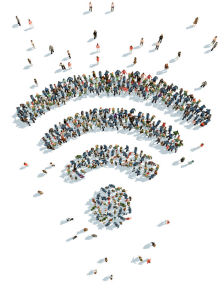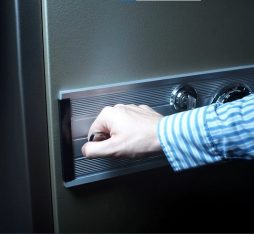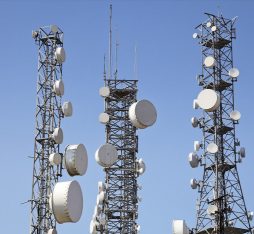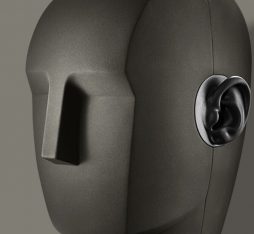In the meantime, as a result of internal research on the needed evolution towards a Carrier-grade Wi-Fi, Orange has been particularly involved in the creation of a new standardization group to shape the generation of Wi-Fi that will follow 802.11ac. Under its name 802.11ax, it will reach market in 2017-18.

Need for a Carrier-grade Wi-Fi. The explosion of data traffic in the last 5 to 6 years is leading to Wi-Fi becoming an integral component in the delivery of broadband wireless services by fixed and mobile network operators around the globe. While in the short term the focus is on offloading cellular networks in particular locations, in the medium term Wi-Fi will enable a much larger increase in aggregated capacity when deployed in various types of small-cell networks.
But Wi-Fi presents several challenges to realising its promise in an integrated mobile network. Operators want to be able to deploy Wi-Fi not only in traditional environments (home and office) but also in environments that it has not been designed for, such as streets, railways stations and public spaces. This is causing performance and robustness issues that impact the overall Quality of Experience and limit the opportunities for leveraging Wi-Fi to provide better quality at lower cost and compete efficiently against existing and emerging rivals.

Thanks to its research activities, Orange has identified several limitations in the PHY and MAC layers of the underlying IEEE 802.11 standard that will prevent operators from providing a high quality and predictable user experience in these real-world deployment scenarios in the incoming years, when densification will have raised to a critical level. For instance, while Wi-Fi performs well in small indoor environments with a limited number of connected devices (such as at home), the situation is often very different in hotspot scenarios where many devices are simultaneously requesting access and there are many neighbouring networks, since Wi-Fi has not been designed to be efficient outdoor and to efficiently share its huge theoretical throughput among a large number of interfering devices.

New standardization group for high density and high efficiency Wi-Fi.Therefore, Orange has pushed, during almost a year, for the creation of a new group in the standards organization that defines Wi-Fi technology (IEEE 802.11) with the aim to solve these issues – focusing on operators’ requirements in deployment scenarios where Wi-Fi should have performed poorly in the future: dense overlapping networks with large numbers of neighbouring Access Points, high density environments with large numbers of end-user devices, and outdoor environments (use case document). This group is called High Efficiency WLAN (HEW) and defines the scope of next generation of Wi-Fi in the traditional bands: 2.4 and 5GHz unlicensed bands (see this FierceWireless article).
The goal of this initiative was ambitious as we were proposing to the 802.11 community to change the objective it has always used to drive new standards. Rather than continuing to target increased theoretical peak throughputs (the “big Gbps” number on the box that we hardly experience), we were proposing to focus on improving the performance and throughput that is actually experienced by users in real-life scenarios.
The HEW Study Group went through lengthy discussions and an unusually rigorous process of scoping and feasibility assessment to reach this stage, which reflects the complexity of the project’s focus on improving performance in real-world scenarios. Nevertheless, the initially planned timeline will be respected. Orange’s priorities have been well taken into account, as the documents are based on our initial proposal of requirements, and we closely followed and influenced its evolution.
The HEW study group voted unanimously in January 2014 to approve the documents that define the scope and objectives of the project (this document describes an overview of HEW). A Task Group was therefore created in May to actually define the new specification. Following the nomenclature of previous well-known Wi-Fi standards (e.g. 802.11b/g/n/ac/ad), this new amendment is called 802.11ax. Since then, Orange continues to be very active in the definition of 11ax specifications, through the proposition of technical solution.
Through this success, and in combination with the Carrier-Grade Wi-Fi initiative in Wi-Fi Alliance and related activities in Wireless Broadband Alliance and 3GPP, Orange is now firmly “on the map” as a legitimate player in defining the future of Wi-Fi.











